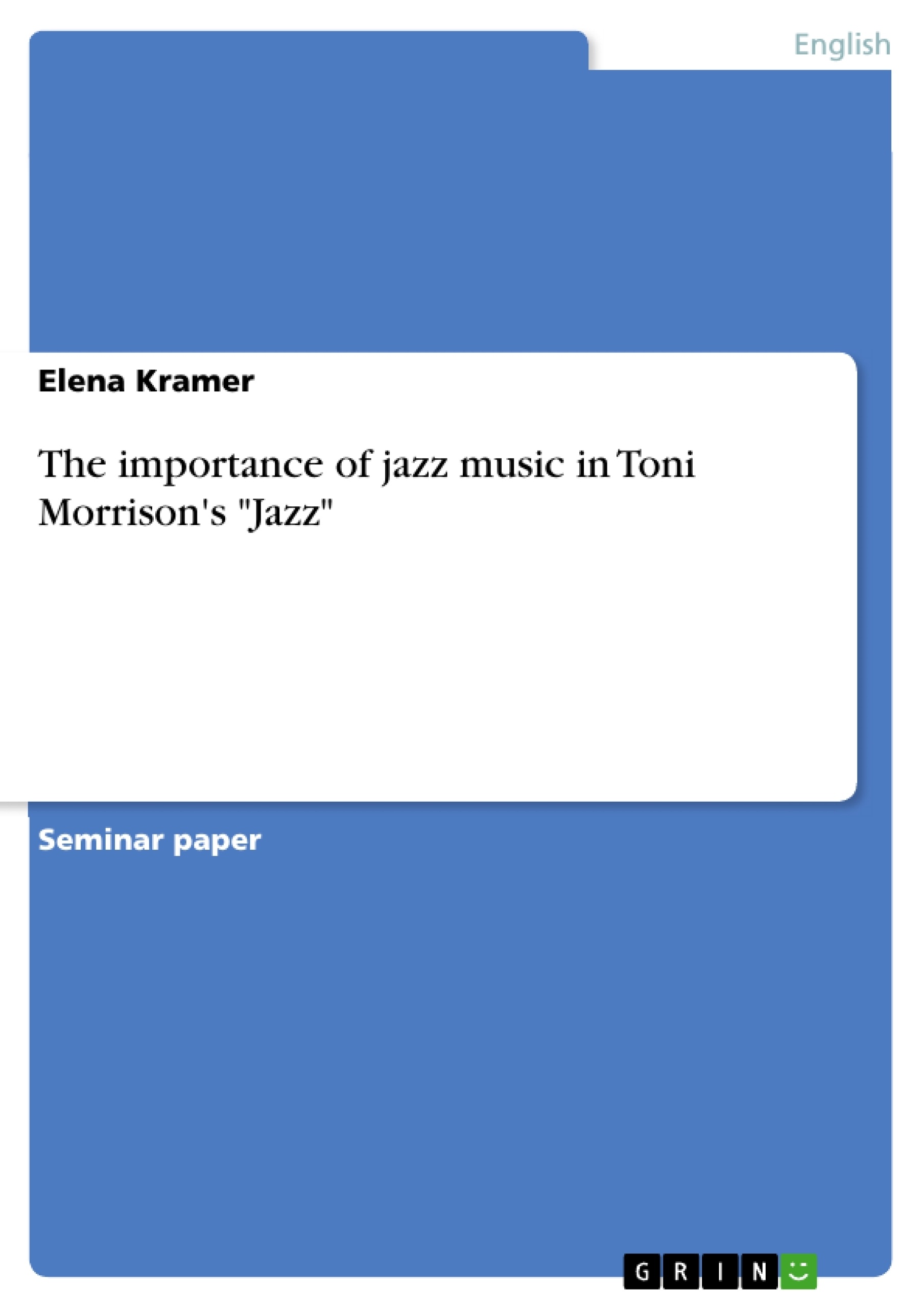The first reading of Toni Morrison’s novel made me wonder why the author chose the title Jazz. It describes the difficulties various African Americans have in integrating themselves into the urban context of the North. The origin of this dilemma lies in unsolved problems, unprocessed experiences and in an incomplete reappraisal of the past. Identity, as it seems, needs to reconcile history and present. Blacks in northern cities at the beginning of the 20th century still suffered from the reverberations of slavery; the Great Migration out of the Old South and into the industrialized North with its promising opportunities had not settled these problems.
In this paper, I want to examine jazz music and its function within the thematic frame of the story. Since history is of great importance in the novel, it is necessary to comprehensively outline the historical background of the story, which reaches from the late years of slavery up to the artistic blossom during the Harlem Renaissance. The development of the jazz culture then serves as a starting point for the analysis of musical elements in the novel. This embraces structural as well as stylistic parallels and also comments on the function of the unconventional narrator. The focus then turns to the main characters of the story, Joe and Violet Trace, to the problems they have with themselves and their marriage and the solution the author offers. Toni Morrison suggests that the problems of alienation and loss of identity result from a missing connection of past and present. A stable identity must be rooted in history, so the denial of one’s origin is a dangerous violation of the self.
Many studies dealing with Jazz have concentrated on the way Morrison transfers musical elements into a stylistic concept, but I want to show the connection between this narrative technique and the theme of the novel. In Jazz, jazz music is used as a metaphor for African American identity in its most productive form. The music successfully fuses African heritage and American tradition and is therefore an authentic expression of the African American self.
Table of Contents
- 1 Introduction
- 2 The setting of the story
- 2.1 African Americans at the beginning of the 20th century
- 2.2 Harlem in the 1920s
- 2.3 The development of a black musical culture
- 3 Musical elements in Jazz
- 3.1 Jazz structure
- 3.2 Jazz style
- 3.3 The role of the narrator
- 4 Jazz music as a metaphor
- 4.1 The impact of history
- 4.2 History and past traumas
- 4.2.1 Joe's history
- 4.2.2 Violet's history
- 4.2.3 The solution
- 4.3 The function of jazz
Objectives and Key Themes
This paper analyzes the role of jazz music in Toni Morrison's novel "Jazz" and explores its connection to the central themes of the story. The focus lies on understanding how jazz functions as a metaphor for African American identity, highlighting the historical context of the story and its impact on the characters. Key themes explored in the paper include:- The impact of history and past traumas on African American identity
- The role of jazz music as a representation of African American heritage and culture
- The challenges of integration and the search for identity in the urban context of early 20th century America
- The importance of reconciling history and present for a stable identity
- The consequences of denying one's origins and the significance of finding a connection between past and present
Chapter Summaries
- Introduction: This chapter sets the stage for the analysis by introducing Toni Morrison's novel "Jazz" and its focus on the challenges African Americans faced in integrating into the urban North at the beginning of the 20th century. It highlights the importance of understanding the historical background and the development of jazz culture in order to fully comprehend the novel's themes and the role of jazz as a metaphor for African American identity.
- The setting of the story: This chapter delves into the historical context of the story, exploring the experiences of African Americans at the beginning of the 20th century. It discusses the Great Migration, the impact of slavery and Reconstruction, and the rise of racial violence and segregation in both the South and the North. The chapter also focuses on the development of Harlem as the center of black cultural and political awakening during the 1920s.
- Musical elements in Jazz: This chapter explores the specific musical elements of jazz as presented in the novel. It analyzes jazz structure and style and examines the function of the unconventional narrator. The chapter provides insights into how Morrison incorporates musical elements into the narrative to convey the themes of the story.
- Jazz music as a metaphor: This chapter analyzes the symbolic significance of jazz music in the novel. It explores the connection between jazz and African American identity, emphasizing how the music serves as a metaphor for the fusion of African heritage and American tradition. The chapter also examines the role of history and past traumas in shaping the identities of the characters, particularly Joe and Violet Trace.
Keywords
This paper focuses on themes of African American identity, jazz music, history, past trauma, integration, Harlem Renaissance, the Great Migration, and racial violence in the early 20th century. It analyzes the function of jazz as a metaphor for African American identity and its connection to the historical context of the story. The research explores the impact of history on the characters' lives and the importance of reconciling past and present for a stable identity.- Quote paper
- Elena Kramer (Author), 2008, The importance of jazz music in Toni Morrison's "Jazz", Munich, GRIN Verlag, https://www.grin.com/document/132820




